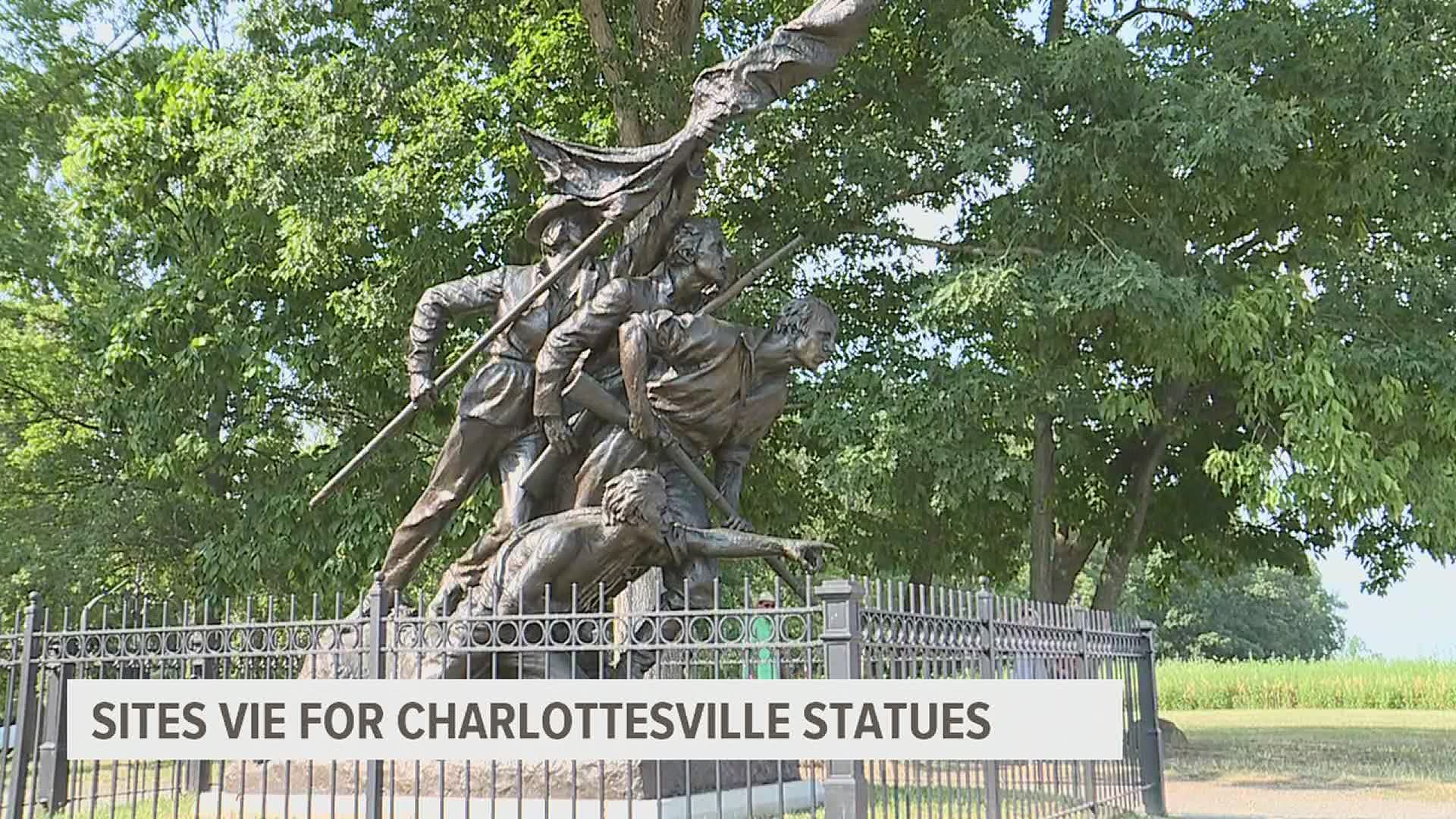GETTYSBURG, Pa. — At least 33 applicants, including 14 organizations, 18 private citizens and one town have applied to acquire one or both of the bronze Confederate statues removed from Charlottesville parks earlier this month.
The statues of Confederate Generals Robert E. Lee and Stonewall Jackson were taken down July 10. They had become the focus of a violent white nationalist rally in 2017.
Applicants include the Jefferson School African American Heritage Center in Charlottesville, the Jim Crow Museum in Big Rapids, Mich., the Shenandoah Valley National Historic District in New Market, Va., the Ogletree Estate in Cornelia, Ga. and LAXART Museum in Los Angeles.
The only Central Pa. organization vying to re-house the statues is the Gettysburg Sculpture Museum and Garden. However the museum has no physical location or comprehensive website, and the applicant, T.C. Donahoe, did not respond to calls or an email seeking comment.
The City of Charlottesville did not comment on their vetting process for applicants. However in a Request for Information and Qualifications (RFI/RFQ) for removing a third statue, “Their First View Of The Pacific” (Meriwether Lewis, William Clark and Sacajawea statue), states that a successful respondent will have:
- Full work plan detailing the logistics of the statue removal and relocation.
- Site plan detailing new location and installation details of the statue.
- Name and contact details of all proposed contractors (rigging/hauling contractors etc.).
- Name and contact details of any proposed design professionals.
- Proof of Insurance and provision of bonds to cover damages.
In deciding where to move the statues, the City Council may follow the lead of sites like Gettysburg National Military Park, which adds historical context to its roughly 330 Confederate monuments and markers.
“Some of those have, of course, have some controversy to them in today's society,” said Park Ranger and communications specialist Jason Martz. “But what that allows us to do is to take a deeper look at these Confederate monuments and allow for a much broader understanding.”
Organizations and sites that contextualize history can offer a fuller picture than most municipal parks, Martz said.
“For all of the warts it all exists here for us to explain. In many cases of these throughout the country where these have been taken down. What you have is memorialization to, in some cases, what's known as the Lost Cause.”
The Lost Cause is an interpretation of the Civil War that presents the Confederacy in a romanticized light and asserts that the war was not centered around slavery.
The City of Charlottesville said in a statement that they remain open to additional expressions of interest for the statues. The City Council will receive recommendations for the transfer of ownership of the statues on Nov. 1 and is expected to make a decision on the transfer by the end of the year.
The statues are currently being stored on city-owned property.

